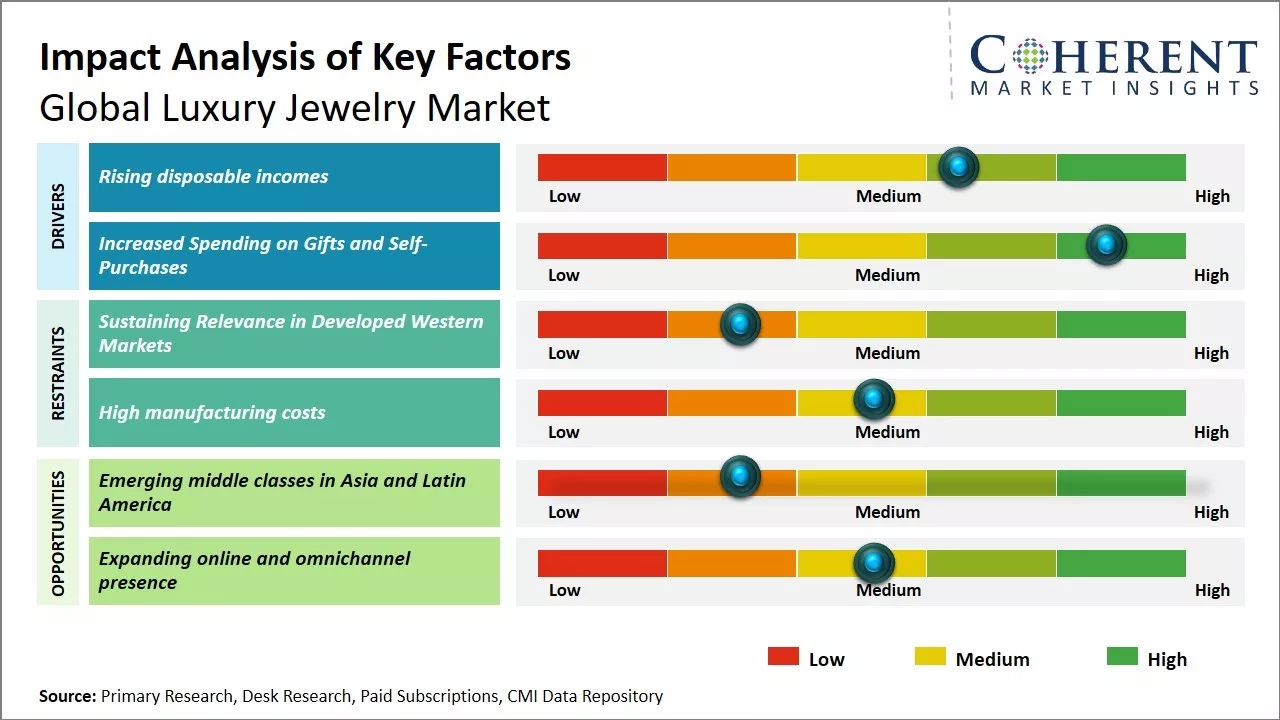The Global Luxury Jewelry Market is estimated to be valued at USD 57.13 Bn in 2025 and is expected to reach USD 98.60 Bn by 2032, exhibiting a compound annual growth rate (CAGR) of 8.1% from 2025 to 2032.

To learn more about this report, Request sample copy
The luxury jewelry market is expected to witness positive growth over the forecast period. The growing millennial population with increasing spending power is expected to drive the demand. Moreover, changing lifestyle and fashion trends have encouraged consumers to spend more on luxury jewelry to flaunt social status. Furthermore, rising adoption of online channels by key players to boost sales is anticipated to provide potential growth opportunities for the market expansion. However, pricing volatility of precious metals and gemstones may hamper the market growth. Nonetheless, market players can explore opportunities in emerging economies to further penetrate into untapped markets.
Rising disposable incomes
Rising disposable incomes across various economies have significantly contributed to the growth of the global luxury jewelry market in recent years. As per World Data Lab, the global middle class population is expected to grow by over 1 billion people between 2019 to 2025. This rapid growth in middle and upper middle income population has increased their purchasing power. With higher disposable incomes, people are able to spend more on luxury and premium products instead of just necessities. Luxury jewelry products such as diamonds, gemstones, gold and silver jewelry have become affordable indulgences for the rising middle class consumers in developing nations. As per United Nations DESA report, disposable incomes in Asia and Africa are projected to rise substantially between 2020-2023. This will enable more consumers in large developing countries like China, India and Nigeria to buy expensive luxury adornments. For example, the per capita annual disposable income in China increased from USD 7,174 in 2015 to over USD 10,000 in 2020 according to National Bureau of Statistics China. Similarly, the average disposable income in India has doubled from INR 62,671 in 2015 to INR 131,715 in 2020 as per Centre for Monitoring Indian Economy. The growing wealth has encouraged consumers across various income segments to purchase luxury and branded jewelry on special occasions, festivals and also to flaunt their social status. Luxury jewelry brands are launching affordable as well as premium product lines to tap both the premium and mass markets. They are also expanding their retail presence in developing markets through both offline and online channels. The burgeoning demand has attracted several new players while existing brands are diversifying and customizing their offerings. As disposable incomes continue to rise in the medium term in emerging economies, the global luxury jewelry industry is slated for further growth in the coming years.
Joining thousands of companies around the world committed to making the Excellent Business Solutions.
View All Our Clients